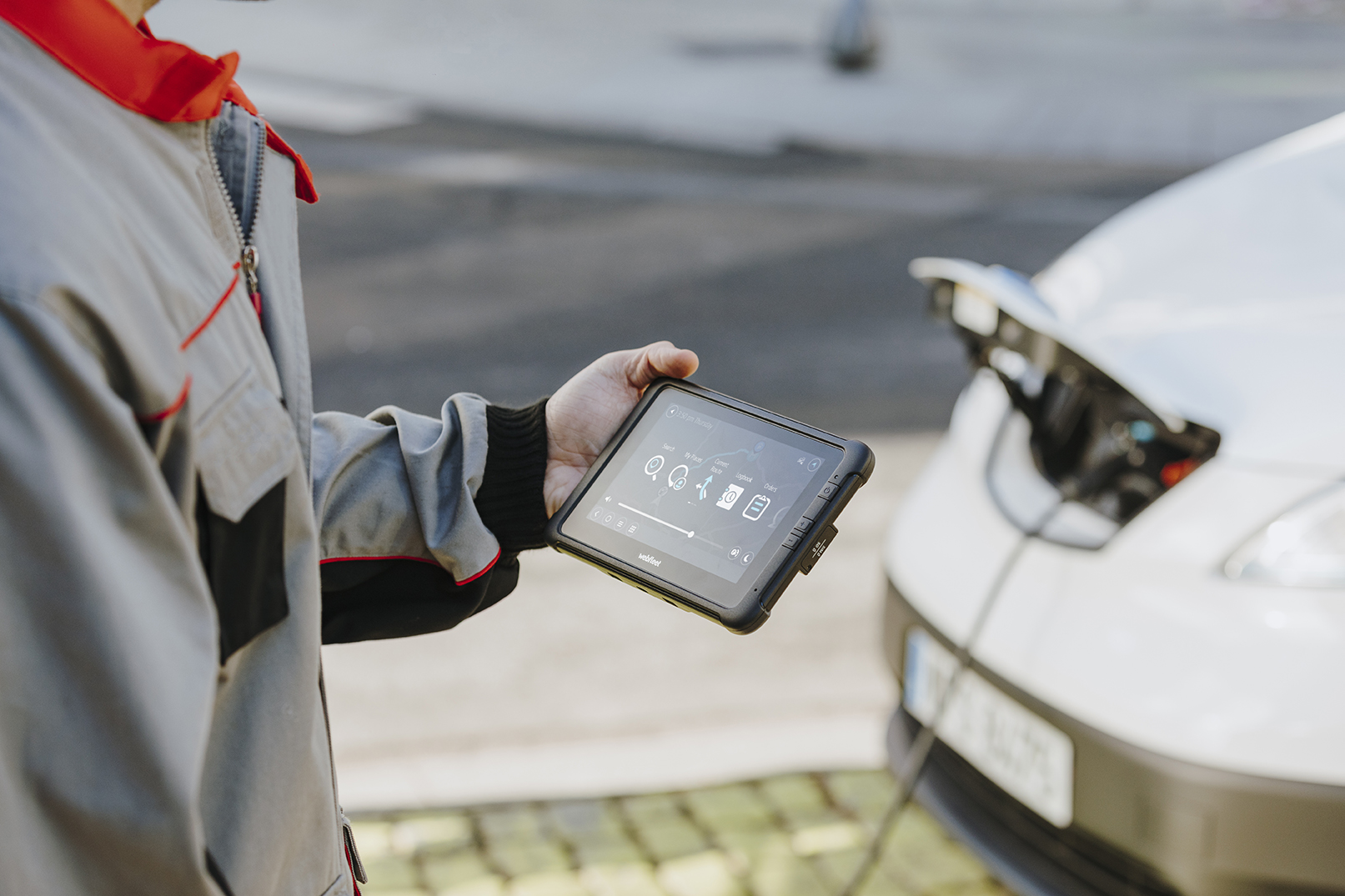The key points to electrifying your fleet.
We are about to begin COP26 in Glasgow. The world is hopeful of an agreement to move away from fossil fuels and towards more eco-friendly energy sources. What part can electric vehicles play in this transition and what does this mean for your plans?
How should you plan for the way that electric vehicles will help you run a more competitive fleet of vehicles? Especially when you will be unable to buy a new car or van with an internal combustion engine from 2030. So lets investigate the key points to electrifying your fleet.

What’s driving the change to Electric Vehicles?
Regulation is playing a significant part in driving this change. The European Union has committed to reducing greenhouse gas emissions by 40% from 1990 levels by 2030. Many major cities have made serious commitments already notably:
- London – Aims to be emission free by 2040 and only Euro 6 standard engines can access the LEZ (Low Emission Zone). Just this week, London’s Ultra Low Emission Zone has become 18 times the size of the previous central zone.
- Amsterdam – will be emission free for trucks and LCV’s from 2025 and then all vehicles by 2030.
- Hamburg – aiming to be climate neutral by 2050 and allows only partial access to Euro 6 standard engines since 2018.
- Paris – currently phasing out ICE’s and aiming to be carbon neutral by 2050.

New Standards for OEMs – Original Equipment Manufacturers of Vehicles.
Authorities are now placing similar restrictions on OEMs as they are on drivers and business for CO2 emissions. EU regulation heavily penalises OEMs whose average carbon dioxide emissions from the cars and vans they sell rises above 95g per kilometre. These penalties came into effect in 2020 and are expected to become even stricter in the coming years.
Advantages and disadvantages of Electric Vehicles
Advantages:
- Lower running costs than ICE’s (Internal Combustion Engines).
- Significantly reduced carbon footprint.
- Financial incentives from Government.
- Simpler maintenance at less cost.
- Increased amounts of vehicle data.
Disadvantages:
- Higher purchasing price than ICE’s
- Limited range of mileage
- Limited charging infrastructure.
- Battery lifespan challenges
- New workplace infrastructure to manage charge points.
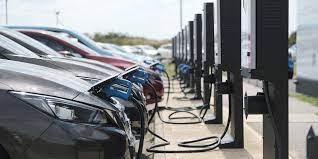
How can telematics help with Electric Vehicles
EV Charging Stations on the map Navigate to charge points.
WEBFLEET provides detailed information on charging stations such as opening hours, supported connectors and their availability for EVs directly from the map. Make sure your vehicles arrive at the correct charge points.
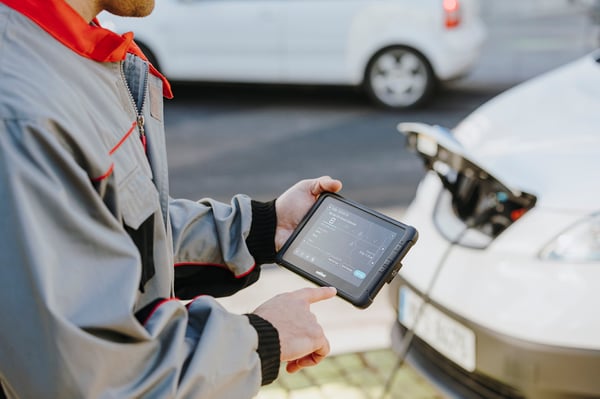
Remaining Driving Distance
Find the nearest vehicle to a location on WEBFLEET by seeing the remaining charge each vehicle has as well as the distance/range it can travel. This will allow you to select the correct vehicle for each job or delivery.
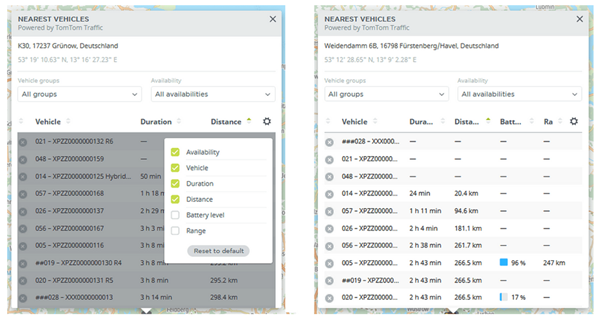
Energy Consumption Reporting
Reduce your range anxiety regarding your electric and plug-in hybrid vehicles by always knowing their battery level and remaining driving range.
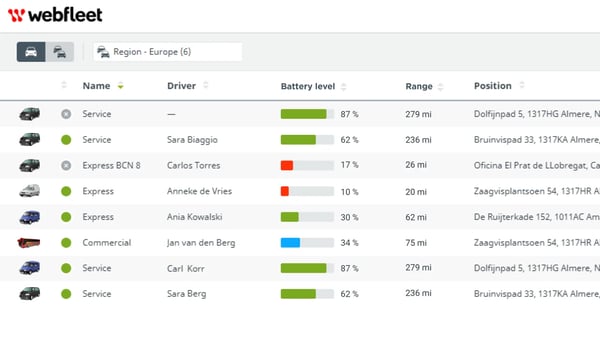
Fleet Electrification Planning Report
WEBFLEET helps you identify potentials for a greener fleet. With the new Fleet electrification planning report you can identify which of you vehicles can potentially be replaced by electric vehicles. The main criteria for recommendations to replace individual vehicles with EVs is based on the expected maximum daily distance. Vehicles that are driving a mileage below this threshold, which you can freely select, are suggested to be replaced in the Fleet electrification planning report. But you can also refine your criteria by including standstill times and the types of roads your vehicles are taking.
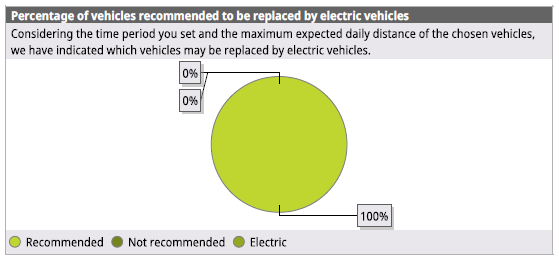
Charger Connection Report
This report allows you to see battery levels at the start and end of charging as well as visibility of how long the vehicle has been charging for. Vehicles are often left to charge for longer than is actually required.

What are your plans for Electric Vehicles?


